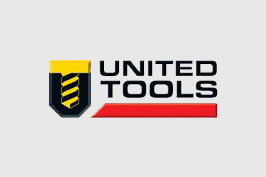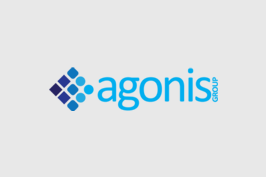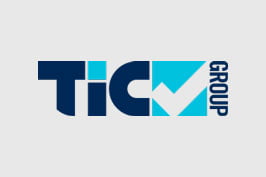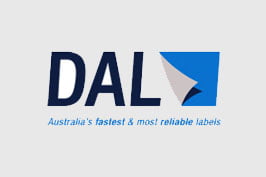Introduction
In this new age digital world where everyone has put forth their businesses online, new websites often emerge frequently, eager to make their mark in the online landscape. However, merely having a website is insufficient in this crowded and competitive online world. To truly thrive and stand out, new websites must employ effective strategies that can catapult them to success.
It is, therefore, necessary to explore some lucrative SEO strategies for new websites keeping in mind the need to choose the right domain names and keywords, the importance of target audience analysis and user experience, the need to utilize Google Analytics and trends, aligning SEO strategies with industry standards along with the power of content calendars, and the art of keeping tabs on SEO competition.
Today, creating a website is an essential step for businesses and individuals alike. However, a mere online presence is no longer sufficient to thrive in the competitive online landscape. Effective Search Engine Optimization (SEO) strategies are crucial to truly thrive and stand out from the crowd. SEO plays a pivotal role in enhancing a new website’s visibility, driving organic traffic, and, ultimately, achieving business objectives. Following are a few practices to undertake in order to leverage the best outcome for any new website:
SEO Practices that are essential for new website building
Lucrative SEO Strategies for New Websites
In today’s competitive online environment, it is imperative to tailor your website for search engine optimization (SEO). Approximately 68% of online experiences begin with research on a search engine such as Google. Thus, appearing at the top of a search engine result provides many benefits, from an increase in organic traffic to a boost in credibility for your site.
Obtaining visibility and attracting organic traffic to a new website depends on effective Search Engine Optimization (SEO).
Combining on-page and off-page SEO techniques is crucial when beginning a search engine optimization campaign. A website’s on-page optimization involves enhancing elements, such as meta tags, titles, headings, and content. Meanwhile, off-page SEO revolves around building quality backlinks and increasing the website’s authority in the eyes of search engines.
Example: A new online pet store can optimize its product pages with relevant keywords, captivating product descriptions, and high-quality images. Additionally, they can reach out to pet bloggers and animal welfare organizations to secure backlinks to their websites.
Choosing the Right Domain Names
A website’s domain name is its digital identity, and it plays an important role in attracting visitors and conveying the brand’s essence. A well-chosen domain name should be memorable, easy to spell, and reflective of the website’s niche. Additionally, the domain name should be closely aligned with your brand and provide an overview of your business products or services to the target audience. Ideally, it should be short, simple, and memorable.
It is also important to consider the domain name when ranking a website. In order to determine the subject matter of a website, search engines use the domain name. Ideally, a domain name should include a primary keyword for which the website is intended to rank. Users find the platform through Google and other search engines by using keywords that reflect their search intent.
It is also beneficial if the domain name clearly identifies the industry or niche in order to attract a more targeted audience. A domain name that explicitly states what a person is looking for is more likely to attract the attention of people searching for specific products or services within a particular niche. As a result of this targeted traffic, conversion rates can be increased, and user engagement can be improved.
The use of domain names that are irrelevant, spammy, or contain hyphens and numbers may raise the suspicion of users and search engines. There is a high probability that such domain names will be associated with low-quality or spammy websites, resulting in penalties from search engines or reduced trust from users. It is possible to avoid these negative associations by selecting a domain name that is relevant, trustworthy, and clean.
Last but not least, any domain name should be unique. The availability of a particular domain can be verified online. The tool can also be used for brainstorming potential domain names. In the event that the desired domain is not available, it will suggest substitute domains.
Example: A craft and DIY blog could opt for a domain like “creativecraftscorner.com,” which immediately communicates the website’s focus and may leave a lasting impression on potential visitors.
Choosing the Right Keywords
Keywords are the foundation of SEO. Proper keyword research helps new websites understand what terms their target audience is searching for and enables them to create content that aligns with these queries.
Choosing the right keywords is one of the most important steps when creating a new website. Whenever people are looking for information or solutions online, they enter keywords into search engines such as Google. It is possible to increase the visibility of a website in search results by choosing the right keywords. Sites that appear on the first page of search engines are more likely to attract potential customers or readers since more people are likely to visit them. Well-chosen keywords attract visitors who are genuinely interested in the content on a website. In turn, this leads to higher conversion rates and improved user experiences. As such, users are more likely to engage with the website’s content. It is possible to compete effectively with other websites in one’s niche by targeting specific keywords.
Choosing less competitive but relevant keywords can give a new website a better chance of ranking higher in search engine results. Using the right keywords can also provide insight into what the target audience is searching for. Using this information, one can tailor content according to the needs and interests of customers, making the website more valuable and relevant. A key objective of Google is to identify and present the most valuable information to searchers based on the keywords used in their search queries, otherwise known as “search intent.”
In order for a new website to succeed in the online world, it is fundamental to search for the right keywords. As a result, it drives traffic, helps one understand their audience, and lays the groundwork for a successful, well-optimized website.
Example: An eco-friendly clothing brand could identify keywords such as “sustainable fashion,” “ethical clothing,” and “eco-friendly apparel” to target environmentally-conscious consumers effectively.
Target Audience Analysis and User Experience
Knowing the target audience inside out is paramount for success. Understanding their preferences, pain points, and browsing habits allows new websites to tailor their content and user experience accordingly. A significant aspect of SEO is optimizing the user experience. Search engines, like Google, factor in user experience when determining rankings. Websites that prioritize factors such as site speed, mobile-friendliness, and intuitive navigation are rewarded with higher rankings. A positive user experience not only pleases search engines but also keeps visitors engaged and encourages repeat visits.
Conducting a target audience analysis prior to developing a new website is an important SEO practice that can have a significant impact on its success. In order to understand one’s target audience, one must go beyond knowing the basic demographics and gain a deeper understanding of preferences and needs. A clear understanding of the target audience allows one to create content that resonates with the ideal customer. In order to make the website more relevant and engaging, it is important to address the users’ specific interests and pain points. When choosing keywords, it is important to understand the language and search behavior of the audience. As a result, the website ranks higher in search results when potential visitors search for information about its products.
Website owners can optimize their user experience by thoroughly analyzing their target audience. One can create a user-friendly interface by organizing content in a manner that aligns with their audience’s preferences, which keeps visitors engaged and encourages them to explore further. It is more likely to attract visitors or subscribers if one caters to their needs and interests. In the process of developing a new website, a target audience analysis is an essential SEO practice. As a result, it guides the creation of content, keyword optimization, and marketing strategies that result in improved user experience, higher conversion rates, and long-term success.
It is possible for any website to thrive and become an invaluable resource for its audience by engaging with them on a deeper level. Marketing campaigns are becoming increasingly common to be smaller in scale and more personalized. Keeping up with that trend and maintaining effective campaigns can be costly if not calibrated correctly. Knowing your audiences and aligning your campaign content with them is crucial to avoiding a loss of return on investment.
Example: An online gaming community targeting casual gamers might design an intuitive, user-friendly website with easy navigation and quick access to the latest games and updates. Moreover, it is pertinent for websites to adhere to Google guidelines in order to perform better or at par with their competitors in this manner.
The Need to Use Google Analytics and Trends
To make informed decisions, new websites must track and analyze their website performance using tools like Google Analytics. Monitoring key metrics such as traffic sources, bounce rates, and popular pages helps refine strategies and identify improvement areas.
Moreover, using Google Search Console, you can monitor your website’s performance in search and improve your search engine ranking. As a result, it has become indispensable for online businesses and publishers who wish to maximize profitability. The free tools and reports make it easier for you to manage your search presence.
Google Search Console is an open source web service that provides publishers and search marketing professionals with a way to monitor the health and performance of their websites in relation to Google search results. The tool provides publishers with an overview of metrics related to search performance and user experience to assist them in improving their sites and generating more traffic. In order to optimize a website’s performance and increase its ranking, it includes features such as monitoring, indexing, crawling, and error fixing.
Other SEO auditing tools can also be leveraged to improve website ranking, such as Moz, SEMrush, and Ahrefs. In terms of SEO tools, Semrush, Ahrefs, and Moz are the top three. These tools can be used to do keyword research, analyze competition, track SEO rankings, and monitor backlinks.
Example: An e-commerce platform can leverage Google Analytics to identify the most popular products and optimize their marketing efforts accordingly.
Using the Best SEO Strategies as per Industry Standards
Every industry has its unique SEO challenges and practices. Adhering to industry standards ensures that new websites are competitive and on par with established players. The SEO process requires constant attention. It is not a task you complete once when you launch your website and never address it again. It is vital to conduct regular site audits to identify problems and improve your website. Reading about SEO is an essential part of learning how to do SEO for new websites.
For a website to rank well, it is crucial to implement the best SEO practices. Search Engine Optimization (SEO) aims to make your website more discoverable and appealing to search engines like Google, Bing, and others. Search engine optimization practices increase the chances of a website ranking on the first page of search engine results. More organic traffic results from increased visibility, which exposes the site to a broader audience.
A key component of SEO best practices is user experience, ensuring that the website is easy to navigate, loads quickly, and provides valuable and relevant content. Positive user experiences result in lower bounce rates and higher engagement, which are factors search engines consider when ranking websites. Following the best SEO practices gives one an edge over websites that ignore SEO or use outdated techniques. Staying up-to-date and adhering to industry standards increases one’s chances of outranking their competitors.
In order to achieve good website rankings, SEO practices should be used as per industry standards. As a result, it increases visibility, attracts targeted traffic, enhances the user experience, and establishes credibility. Maintaining current knowledge of SEO best practices will enable a website to gain a competitive edge, adapt to algorithm changes, and enjoy long-term success.
Example: A new travel blog could analyze successful competitors to understand what type of content and keywords perform best in the travel industry, thereby refining its content strategy.
Keeping Tabs on SEO Competition
In the fast-paced digital world, monitoring competitors’ SEO strategies is essential. Analyzing their tactics and identifying gaps can offer valuable insights and help new websites find ways to differentiate themselves. The digital arena is a battlefield of competition, and with a well-thought-out SEO strategy, new websites can be overshadowed by established players in their industry.
SEO enables websites to analyze and monitor competitors, identifying areas of strength and weakness. With this information, new websites can differentiate themselves and carve a unique niche in the market. Ahrefs is one of the best tools for analyzing competitor websites and improving rankings. This is a popular SEO tool that is used to improve website rankings and explore competitors’ sites. It enables one to plug in any URL that needs to be analyzed and leverage it for competition analysis. Ahrefs can be used for the following purposes:
- View all organic search terms for which a site ranks and its SERP position.
- Customize rank trackers to see how specific keyword strings rank on website pages.
- Interact with interactive graphs to visualize traffic sources and website traffic.
- Keep an eye on the domain rating of the site.
- Examine the website’s backlink profile and referring domains.
The same can also be achieved with competitor URLs. It is possible to determine what a competitor’s home page ranks for by looking at the list of organic keywords they target and understanding their backlinking strategy. In addition, Ahrefs offers a Content Gap tool that enables one to compare the site’s content with a competitor’s and discover new content ideas. After analyzing these insights, one can use them to guide keyword research, linking strategies, content updates, and much more.
Example: An emerging tech startup can observe its competitors’ backlink profiles and outreach efforts to improve its own link-building strategy.
Cost-Effectiveness and Long-Term Benefits
In comparison to other digital marketing tactics, SEO is an affordable method for gaining visibility for new websites. Paying for advertising can generate immediate traffic, but SEO generates long-term benefits over time as the website’s organic reach grows. Additionally, since SEO targets users actively searching for specific information, products, or services, the traffic generated tends to be more relevant and convertible.
It is important to note that SEO is one of the most important factors in determining a website’s longevity in the digital market. Nearly 68% of online experiences begin with a search engine, while only 0.63% of Google searchers click on results on the second page. Furthermore, organic search generates 53.3% of all website traffic, whereas Google Search, Google Images, and Google Maps account for 92.96% of global traffic.
Accordingly, SEO generates 1,000%+ more traffic than organic social media, and 60% of marketers state that inbound marketing is their highest quality source of leads. As a result, SEO leads have a 14.6%close rate, demonstrating its importance in the digital market sector.
Key Takeaways
In conclusion, effective strategies are the lifeline of new websites aiming to thrive in the competitive online realm. From implementing lucrative SEO techniques, choosing the right domain names and keywords, and analyzing target audiences for improved user experiences, to staying informed with tools like Google Analytics and following industry best practices, the path to success is paved with strategic planning and execution.
Just like skilled navigators exploring uncharted waters, new websites that embrace effective strategies will find themselves well-equipped to navigate the unpredictable currents of the internet, ultimately reaching the shores of triumph and digital prosperity. So, set sail with your strategies, and let your website embark on a voyage to conquer the digital world.














